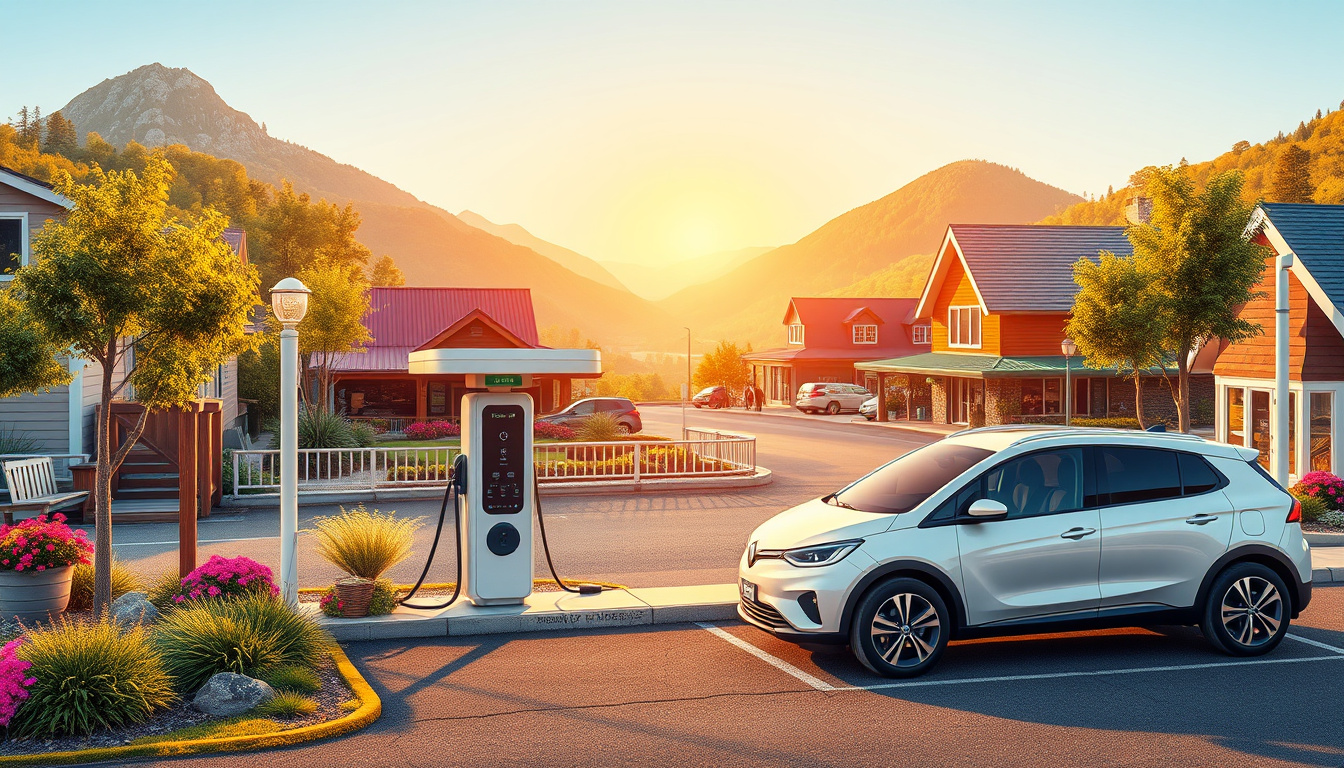The rise of electric vehicles (EVs) is reshaping the landscape of tourism, blending sustainability with travel experiences and opening up new avenues for exploration. As charging infrastructure expands, destinations across the country are beginning to recognize the potential of electric vehicle tourism—a phenomenon that not only draws visitors but also nurtures local economies while minimizing environmental impacts.
The Current EV Landscape and Its Implications
In recent years, the sales of electric vehicles have skyrocketed, with more than 1.6 million units sold in the U.S. alone in 2023. This rapid adoption presents unique challenges and opportunities for the tourism industry. Traditional fuel stations create a model of quick stops that fosters a fast-paced travel culture. In contrast, EV charging takes longer, leading to a shift in how and where travelers spend their time. This "charging time" can now be transformed from a mundane wait into a delightful exploration of local culture and experiences.
Transforming Charging Time into Tourist Opportunities
The notion of "passive tourism" has emerged, which encourages travelers to explore the communities they might otherwise bypass. By placing charging stations at tourist hotspots, restaurants, and key attractions, locations can leverage this downtime for meaningful engagement. For instance, tourists can explore local shops, visit parks, or enjoy a meal while their vehicles are charging, thereby creating a more immersive travel experience.
Communities are also capitalizing on the trend by developing walkable areas around charging stations, which can include art installations, cultural events, and social hubs for community interaction. Examples like the White Passage Scenic Byway in Washington illustrate how strategically placed charging infrastructure encourages exploration of nearby natural and historical sites.
Building a Robust Charging Network
To support this burgeoning trend, a comprehensive network of charging facilities is essential.  The focus should not only be on urban areas but also on rural spaces, often referred to as "charging deserts," where charging infrastructure is nearly non-existent. By strategically locating fast chargers in these underserved areas, tourism can help boost local economies and promote eco-friendly travel initiatives.
The focus should not only be on urban areas but also on rural spaces, often referred to as "charging deserts," where charging infrastructure is nearly non-existent. By strategically locating fast chargers in these underserved areas, tourism can help boost local economies and promote eco-friendly travel initiatives.
Travel organizations, collaborating with local businesses and government entities, are increasingly recognized for their role in developing this infrastructure. The Biden Administration’s commitment to investing billions into the EV infrastructure presents an enormous opportunity for communities to align their tourism strategies with sustainability goals, ensuring a cleaner and greener future.
The Role of Destination Management
Developing a destination’s identity around EV tourism requires thoughtful planning. Sustainable tourism emphasizes the reduction of negative impacts on the environment and local communities, making EV tourism a fitting model. Destinations can attract environmentally conscious travelers by offering attractions that highlight their commitment to sustainability, ranging from eco-friendly hotels that provide charging points to tour companies that promote electric vehicle rentals.
Understanding the demographics and behaviors of EV tourists is crucial in tailoring offerings. For example, analysis may reveal that a significant number of visitors arrive in EVs for relaxation and outdoor activities. By curating experiences that cater to these preferences—such as guided tours through national parks, culinary experiences featuring local ingredients, and scenic drives highlighting natural landscapes—destinations can forge deeper connections with visitors.
Marketing a New Kind of Adventure
As the travel industry adapts to the influx of EV users, unique marketing campaigns are pivotal. Campaigns that highlight scenic routes integrated with EV charging options, sustainable practices, and the exploration of hidden gems can effectively resonate with potential travelers. Collaborations between car rental companies, local businesses, and tourism agencies can create seamless experiences for visitors, enhancing satisfaction and encouraging repeat visits.
The move towards electric vehicle tourism also aligns with the growing consumer interest in sustainability. With greater awareness of climate issues, more travelers are seeking eco-friendly options. By highlighting their efforts to promote greener travel options, destinations can not only attract a niche market of environmentally-conscious tourists but also elevate their position in the global tourism sector.
Conclusion: A Greener Future for Travel
Electric vehicle tourism is more than just a trend; it represents a paradigm shift in travel experiences, emphasizing the importance of sustainability, community engagement, and the enjoyment of leisure. As charging infrastructure continues to improve and expand, the synergy between electric vehicles and tourism promises to foster richer experiences, beneficial for both travelers and local economies.
By transforming the inherent "waiting" time of EV charging into opportunities for exploration, we can cultivate a culture of travel that embraces scenic routes, local flavors, and small-town hospitality—while contributing to a collective effort toward a greener future. As electric vehicles become increasingly prevalent, tourism must adapt to embrace this new opportunity, ensuring that our adventures are not only electrifying but also sustainable.
——————————————————
Voltsandvolts.com is a blog dedicated to electric vehicles (EVs). Our blog features articles on EV reviews, stories, tips, tricks, charging infrastructure, and battery technology. Join the conversation and become part of the Voltsandvolts.com community today!
